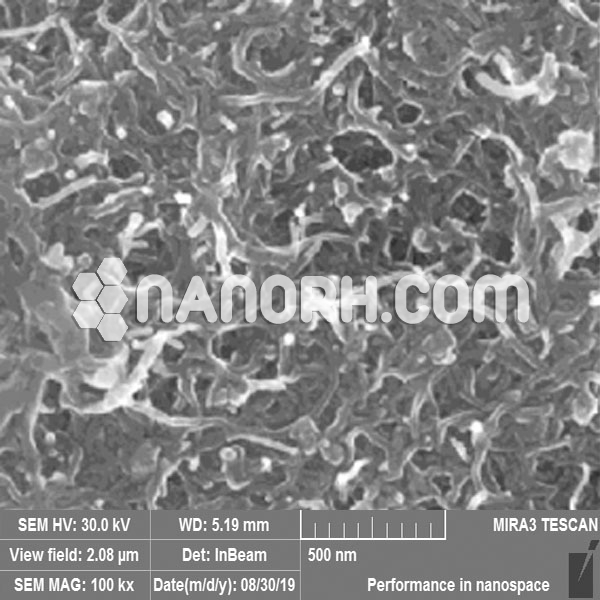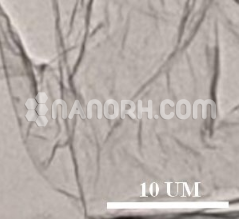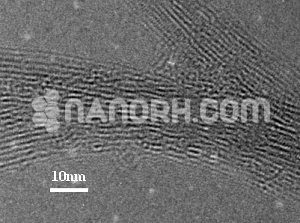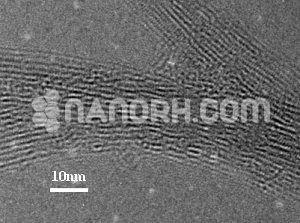| OH Functionalized Short MWCNTs | |
| Product No | NRE-35005 |
| CAS No. | NA |
| Purity | Carbon nanotubes > 95wt% |
| Average Diameter | 20-30nm |
| Average Length | 0.5-2 um (TEM) |
| Special Surface Area(SSA) | >110m2/g(BET) |
| Tap Density | 0.28g/cm3 |
| True Density | 2.1g/cm3 |
| Electric Conductivity | > 100 S/cm |
OH Functionalized Short MWCNTs
Functionalization
Acidic Oxidation: The MWCNTs are treated with a mixture of strong acids such as nitric acid (HNO₃) and sulfuric acid (H₂SO₄). The oxidation process generates hydroxyl groups (-OH) along with other oxygenated species like carboxyl groups (-COOH) on the nanotube surface.
Hydrogen Peroxide (H₂O₂) Treatment: MWCNTs can be treated with hydrogen peroxide to generate hydroxyl groups. This process oxidizes the surface of the nanotubes, forming hydroxyl groups and increasing the surface reactivity.
Plasma Treatment: A more advanced technique involves exposing MWCNTs to oxygen plasma, which generates hydroxyl groups and other oxygen-based functional groups.
UV/Ozone Treatment: Exposure to ultraviolet light or ozone can also oxidize the surface of MWCNTs, introducing hydroxyl groups and improving their dispersion and reactivity.
The hydroxyl groups introduced through these treatments result in increased hydrophilicity, better dispersion in polar solvents, and the ability to engage in further chemical reactions, allowing for functionalization with various molecules such as drugs, polymers, or catalysts.
Properties of OH-Functionalized Short MWCNTs
Improved Dispersion: The introduction of hydroxyl groups on the surface makes MWCNTs more dispersible in aqueous and polar solvents. This property allows for their easy integration into various materials such as polymers and composites.
Enhanced Reactivity: Hydroxyl groups introduce polar functional sites that improve the chemical reactivity of the nanotubes. These reactive sites facilitate further functionalization or coupling with other molecules.
Increased Biocompatibility: Hydroxyl-functionalized short MWCNTs are more biocompatible than pristine MWCNTs, which makes them suitable for biomedical applications. The -OH groups improve their interaction with biological systems and reduce toxicity.
Better Interaction with Polymers: Hydroxyl groups enhance the interaction between MWCNTs and polymeric matrices, improving the mechanical, electrical, and thermal properties of the resulting nanocomposites.




